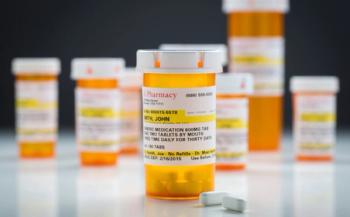
Drugs and the Patient Burden: How Far, How Fast and How Much?
A new IMS study reveals how changes in the design of commercial/employer-based health insurance plans are accelerating the push to higher patient contributions to the cost of prescribed drugs. William Looney reports.
The term “patient centric” is a frequent, favorite topic of US health policy, especially when it comes to the dialogue around development and delivery of innovative medicines. Whether that centricity extends to the payment side of pharmacy is rarely, if ever, discussed – but there are growing signs that ignorance does not confer bliss. Even if patient pay for script is still seen as a sidebar topic, there is strong evidence that, for the average patient, carrying costs around the drug benefit is becoming a burden that could potentially change the commercial rules of the game for big pharma on utilization, outcomes – and reputation.
A new study just released by the IMS Institute for Healthcare Informatics reveals how changes in the design of commercial/employer-based health insurance plans – largely mandated by the 2010 federal health reform law – are accelerating the push to higher patient contributions to the cost of prescribed drugs. The chief culprit is the growing reliance on plans with a pharmacy deductible, in the form of a specific drug deductible or an integrated full plan deductible that incorporates drug charges. This trend mimics the larger move toward insurance carrying a significant deductable against medical expenses. Only 20 per cent of US workers now have health coverage without a deductable, compared to nearly half of all workers as recently as 2006.
Connecting the dots based on four years of data from a variety of sources, IMS finds that the proportion of plans with a pharmacy deductable has doubled over the last three years, from 23 per cent in 2012 to 46 per cent in 2015. About 10 per cent of all plans now impose a separate pharmacy deductible, which is the patient’s own responsibility and held separate from other medical benefit expenses. IMS forecasts a major uptick in these numbers over the next three years, due to the Affordable Care Act and introduction of a new excise tax on commercial and employer health plans to penalize use of so-called “Cadillac” plans with extensive benefits. In fact, the study estimates that plans with high deductible benefit designs could see an enrollment increase of nearly 80 per cent [or roughly 28 million patients] by 2018.
The IMS research also investigated what this means in practical terms for the patient. Using its Formulary Impact Analyzer [FIA] data of longitudinal prescription claims with patient out of pocket information, IMS found that some 17 million commercial brand pharmacy claims were filled at full cost to the patient in 2014, as a consequence of the growth in the pharmacy deductible. This represents just under 10 per cent of all branded claims. Most important, patients who face full cost are more likely to abandon their initial prescription and thus are less likely to stay adherent when presented with a “copay surprise.”
There are also significant therapeutic as well as regional/local variations in the level of patient exposure to costs. In some parts of the country, chiefly in the southern and mid-west states, patient full-cost pharmacy claim exposure can be as high as 20 percent. Likewise, medicines for respiratory disease counted as the therapeutic segment with the highest rates and incidence of full cost of product claims.
Co-pays are also trending higher among patients enrolled in deductable pharmacy plans. A third of claims for brand name medicines carried patient co-pays of over $100 per scrip in the deductable plans, compared to only six per cent for plans that have no deductable.
The report concludes with a frank assessment of the bottom-line meaning for patient welfare and the efficiency of the US health system. Mason Tenaglia, Vice-President of the IMS Institute for Healthcare Informatics [and a member of Pharm Exec’s Editorial Advisory Board [EAB], who led the study, says “deductibles are having a profound effect on pharmaceutical manufacturers as well. Investments in sales, marketing and patient savings and assistance programs are all being impacted. Strategically, looking forward, this means less productivity and greater spending where deductibles are present.”
“Emergence and Impact of Pharmacy Deductibles: Implications for patients in Commercial Health Plans,” IMS Institute for Healthcare Informatics, September 2015, can be found at the following link:
Newsletter
Lead with insight with the Pharmaceutical Executive newsletter, featuring strategic analysis, leadership trends, and market intelligence for biopharma decision-makers.





